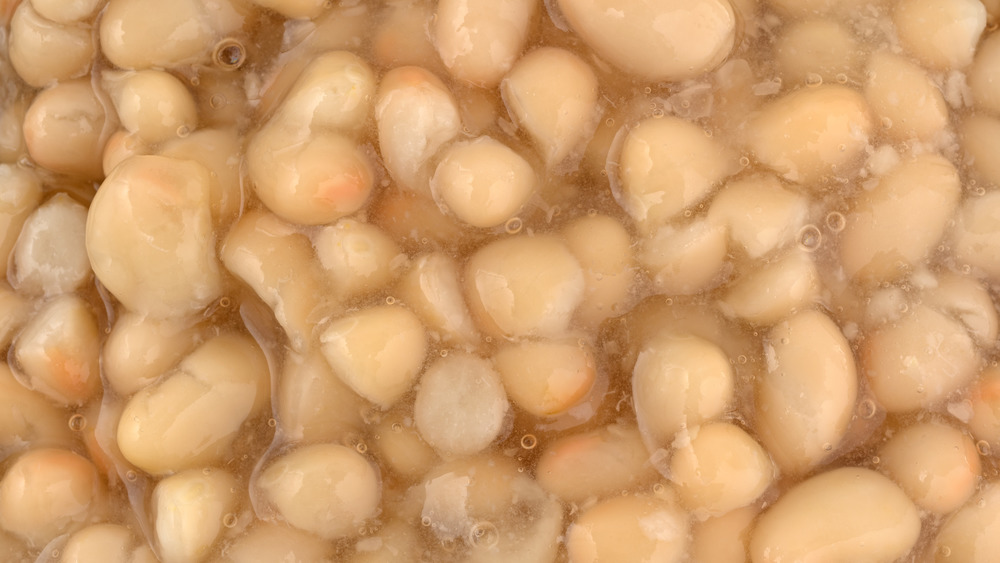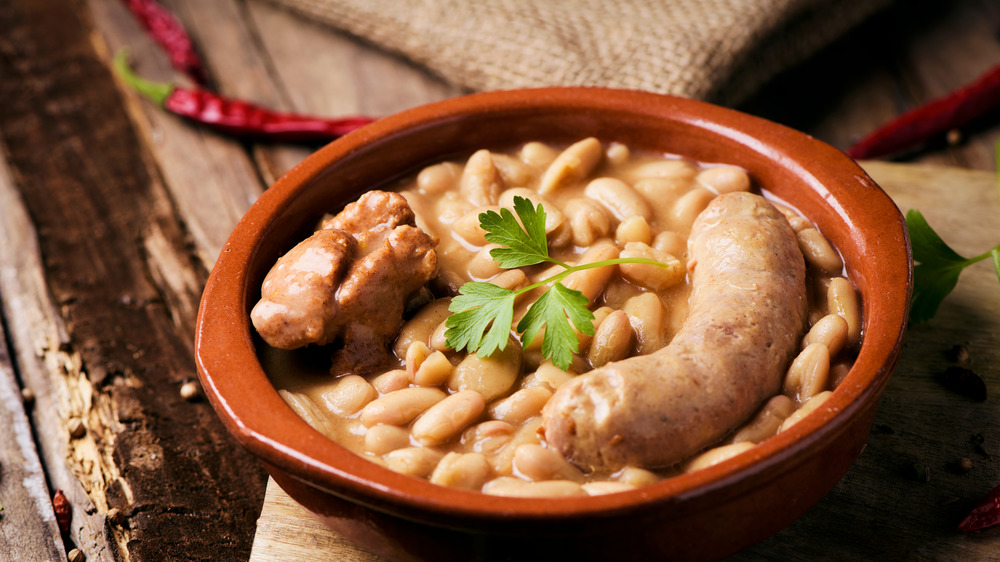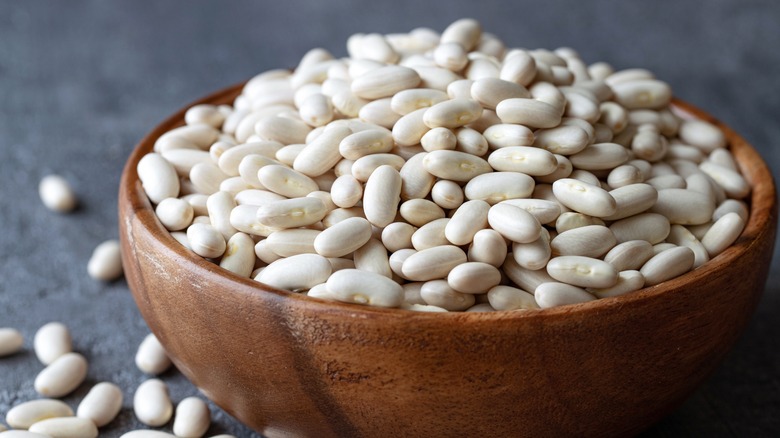The Real Difference Between Navy Beans And Great Northern Beans
Quick quiz! You have to make a cassoulet, but what type of beans do you need to use? If you immediately got stumped and answered "whatever beans I have in my cupboard," get ready to expand your horizons, especially if you don't know the difference between navy beans and great northern beans.
According to Camellia, navy beans take their name from their extensive use as an ingredient in the U.S. Navy in the early 1900s, partially due to their high fiber content. These beans have thick skins and take anywhere from 90 to 120 minutes to cook. They're the perfect bean to use when you whip up hearty dishes such as Boston baked beans, pork and beans, navy bean soup, and pasta e fagioli, per Leaf.
Great northern beans have an equally long history. According to Leaf, these beans originated in North Dakota, where the Mandan Tribe domesticated them as a regular crop. Great northern beans resemble lima beans but have a thin skin, taking about 45 to 60 minutes to cook. While both navy beans and great northern beans have a very similar, subtle flavor, their key difference lies in their texture, making great northern beans the ideal legume when you're making more delicate dishes.
The perfect uses for great northern and navy beans
Navy beans (also called pea beans) star in dishes that require thick, hearty recipes, while great northern beans make the perfect addition to things such as minestrone soup recipes, chicken chili, and — you guessed it — cassoulets.
And while both beans show off their true flavors and textures in the right recipes, both varieties of legumes share similar positive health qualities. According to Healthline, both types of white beans contain a good amount of protein and fiber and provide a wide variety of vitamins and minerals, including iron, zinc, calcium, and vitamin B6.
Picking the right bean for the right occasion can prove challenging, but after some trial and error, any home chef can choose navy beans and great northern beans for the right occasion. Just remember that the key difference lies in the beans' texture, and you can always remember which legume can stand up in a hearty dip or delicate soup.
Can you substitute one for the other in recipes?
Knowing which bean holds up in a recipe can make a huge difference when you need to prepare a meal, but sometimes you don't have the right bean variety on hand and need to make a substitution. Fortunately, you can substitute navy beans for great northern beans, per Best Substitute for Cooking.
Due to navy beans' smooth texture and nut-like flavor, they won't completely replace great northern beans, but they work when you're in a hurry. On the flipside, have no fear switching out some great northern beans for navy beans. According to Blog Chef, only very particular palates might notice this particular substitution, so don't worry if you need to make this change.
Sometimes, you may encounter a recipe that asks for great northern beans or navy beans. If you check your cupboards and discover you don't have either legume, have no fear. According to Eat Delights, you can use cannellini beans, pinto beans, chickpeas, or lima beans in place of great northern beans. On the other hand, home cooks can opt for any type of white or colored bean, or even lentils if they lack navy beans, per Our Everyday Life. No matter which way you approach these beans, you can't go wrong, thanks to their flexibility and versatility.


